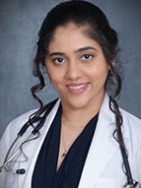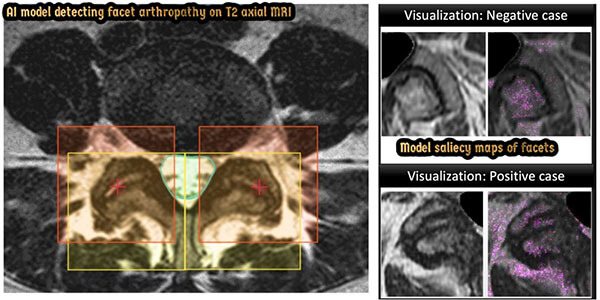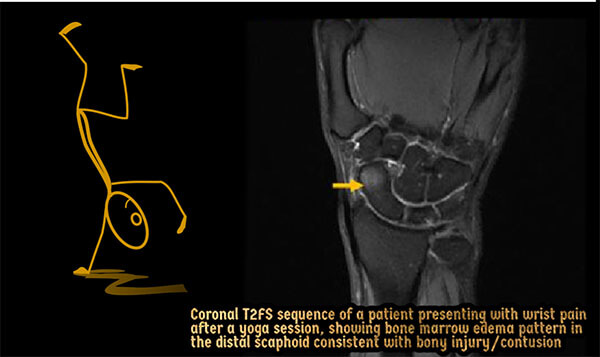Upasana Upadhyay Bharadwaj, MBBS Spotlight

What might Bharatanatyam, a form of Indian classical dance, and the art and science of radiology have in common? Upasana Upadhyay Bharadwaj, MBBS, a postdoctoral scholar in our department recalls that after her 1,000th Bharatanatyam performance, her guru reminded her “to view even my 1,001st performance with the same humility and attention to detail as my very first.” Dr. Bharadwaj applies this same focus and mindset to her current role researching applications of artificial intelligence (AI) to address two common degenerative conditions: chronic low back pain and knee osteoarthritis.
A student of Bharatanatyam since the age of five, Dr. Bharadwaj notes that “there is so much to learn, even after studying for a couple decades. Dance taught me a sense of discipline. And it teaches persistence and perseverance, because for even one short performance of five minutes, we undergo years of training and multiple rehearsals. It teaches you how important hard work is.”
This sentiment is remarkably similar to how Dr. Bharadwaj describes her approach to research at the Center for Intelligent Imaging (ci2) with Drs. Sharmila Majumdar, Thomas Link, Cynthia Chin, and Valentina Pedoia: “I really admire the creative process of research and enjoy the collaborative environment. Our group is highly diverse with expertise in acquisition, signal processing, statistics, machine learning, and of course clinical experts all working towards a common goal of developing and deploying the next generation of AI solutions in radiology. These interactions have helped me develop a comprehensive outlook, challenge myself, and push myself to learn topics I don’t know much about. Each day I really look forward to the wide range of projects and discussions within our group.” Dr. Bharadwaj is quick to credit her ci2 mentors for their encouragement and meticulous approach to research.

Before arriving at UCSF in 2019 Dr. Bharadwaj received her medical degree at the Madras Medical College in India and underwent orthopedic surgery training in Singapore: “When people hear of a clinically-trained post doc in radiology, they may not expect a large component of their work to entail coding.” However, a pivotal experience in the 2018 Medical Image Computing and Computer Assisted Intervention (MICCAI) international conference sparked Dr. Bharadwaj’s interest in artificial intelligence. MICCAI hosts competitive machine learning challenges for conference participants, and Dr. Bharadwaj began preparing for the MICCAI 2018 Pancreatic Survival Prediction Challenge which enables physicians to predict survival outcomes for patients with pancreatic cancer using deep learning models. Dr. Bharadwaj recalls that she needed “to train a machine learning model with a bunch of details, for example, demographics and comorbidities, that could be fed into the model, in addition to features such as the location and extent of the tumor a clinician would use to analyze patient survival, to ensure the model predicts survival time for patients from the time of imaging.” Dr. Bharadwaj placed third in the competition, and remarked that “It's great when you have experts in computer science working on these challenges, but I also thought that having clinical knowledge and being a clinician impacted how I developed the model. For example, out of 10 things that I could have done to train the model, I thought – clinically, what would I look at? What would I consider as the most important aspects?”
This unique combination of clinical experience and computer science offers some interesting insights on the potential of AI. Dr. Bharadwaj observes that AI may improve clinical workflow, prioritization and diagnosis, as well as another benefit: “machine learning models can potentially see things that a human cannot. For example, we can’t see in 3D on a 2D PACS station, and there are three-dimensional AI models that extract more information than we do – that's a huge thing. There are also AI models, which let’s say, look at a radiograph and provide insight that we couldn’t otherwise have without additional imaging such as an MRI.” Looking outward, to potential applications of AI in global clinical settings, Dr. Bharadwaj notes that a significant benefit may be “more economical imaging worldwide, not just in resource-constrained places.” While Dr. Bharadwaj acknowledges that there is hesitation to deploying AI clinically, including concerns about patient management and physician job loss, remaining focused on the overarching goals of enhancing the standard of care and the workflow of radiologists are important perspectives that guide her research: “our current work on spinal stenosis and the entire group’s effort on addressing low back pain with Drs. Majumdar, Chin, and Pedoia has provided early insight into the challenges associated with deployment as well as the long-term benefits of AI.”

With specific interests in musculoskeletal radiology, informed by her training in orthopedic surgery, Dr. Bharadwaj currently studies the association of meniscal root tear morphology with the progression of osteoarthritis. Automating the detection of root tears has the potential to be incredibly valuable, allowing researchers and clinicians to establish stronger associations. Dr. Bharadwaj mentions her good fortune in being able to work on research projects that are both scientifically interesting and have personal significance. “As a former world champion in yoga and with training in orthopedics, I have come across numerous injuries stemming from athletic or training activities – including yoga. With Dr. Link, I am working towards characterizing imaging findings associated with yoga and how they compare against other high-impact and low-impact sports.”

Dr. Bharadwaj spent her childhood years in Bhutan and India, where her parents worked for the United Nations. Her experiences range from acting in three Indian movies as a child artist, speaking six languages, travelling as a cultural ambassador for India to more than 15 other countries, being a six-time national gold medalist in roller-skating, and the youngest recipient of the Government of India’s “President’s Award for Exceptional Achievement” for her contributions to art. Outside of work, Dr. Bharadwaj has a number of interests that range from practicing and teaching Indian classical dance and yoga to baking with her husband. What is next on the horizon for Dr. Bharadwaj? Her future goals are focused on academic radiology: “All the other things that I do are a part of me and continue to shape me as a person. The next step in my path is applying to residency programs and I see myself as an academic radiologist in the not-too-distant future.”
By R. Gaber and K. Murphy
